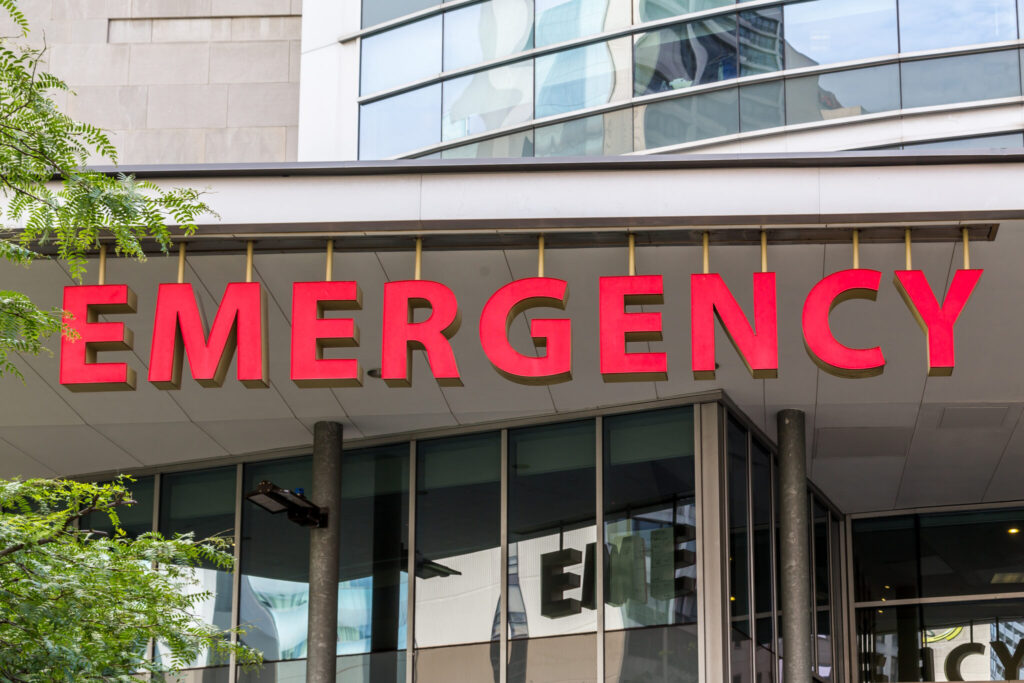New analysis from USC researchers on the potential ramifications of the No Surprises Act, which was implemented in January 2022, finds that a payment rule in the law will likely lead to lower rates for emergency medicine procedures due to reduced bargaining power from hospital and physician groups.
The researchers find average in-network and out-of-network prices paid for emergency clinician services prior to the implementation of the No Surprises Act were 14% and 112% higher, on average, than the estimated qualifying payment amount used during arbitration of disputed out-of-network payments under the law. The study was published today in JAMA Health Forum.
“There is a large body of literature that’s shown that emergency medicine providers and other types of specialists most likely to surprise bill were receiving significantly higher rates – even for in-network services provided—because of their outsized negotiating leverage,” said Erin Duffy, lead author and research scientist at the USC Schaeffer Center for Health Policy & Economics. “Our results suggest that using the qualifying payment amount to arbitrate out-of-network payment disputes will likely affect payment rates that insurers and affected clinicians negotiate for in-network services as well.”
The No Surprises Act will bring downward pressure on emergency medicine prices
The No Surprises Act was passed in 2020 and implemented in January of 2022. The law prohibits providers who are out-of-network from sending a bill to a patient when the patient couldn’t have reasonably known they were receiving care out of network.
One of the most common scenarios resulting in a surprise bill prior to the law being enacted was when an emergency procedure was performed by an out-of-network specialist at an in-network facility. In these scenarios, patients received a surprise bill for the balance between the provider’s charge and the insurer’s allowed rate.
Following the law’s implementation, if a hospital or doctor believes they are not being compensated at the correct amount, they can challenge the payment and send it to an independent arbiter. The only monetary benchmark that arbiters can use is the qualifying payment amount (or QPA), which is the median in-network contract price of the procedure in a certain market and geographic region.
The study assessed in-network and out-of-network emergency medicine amounts paid in 2019 in 650 markets and geographic regions, and compared them to an approximate QPA. Included in the analysis were 7.5 million claims for patients younger than 65 with no secondary coverage to determine how close the 2019 allowed amount was to the estimated QPA.
The researchers find that aside from non-physician in-network services, the 2019 allowed amounts were higher than the QPA used by arbiters under the No Surprises Act:
- The average in-network allowed amount was 14% higher and the average out-of-network allowed amount was 112% higher than the QPA estimate.
- Self-funded plans’ average in-network allowed amount was 15% higher and average out-of-network allowed amount was 120% higher than the QPA estimate.
- Fully insured plans’ average in-network allowed amount was 13% higher and average out-of-network was 43% higher than the QPA estimate.
- Physician average in-network allowed amount was 15% higher and average out-of-network was 113% higher than the QPA estimate.
- Non-physician average in-network allowed amount was 4% lower and average out-of-network was 71% higher than the QPA estimate.
“Prior to the No Surprises Act, some emergency physician groups leveraged a market failure to command high prices,” said Erin Trish, study coauthor and co-director at USC Schaeffer Center. “The law helped address this market failure, which will not only protect patients from surprise bills, but may also help bring down emergency physician prices more broadly.”
Physician payments will be lower using QPA
The researchers find that 2019 in-network and out-of-network allowed amounts varied considerably by geography, especially among self-funded plans. While very few fully insured plans had rates that were 300% of the QPA, the researchers find self-funded plans exceeding 400% in numerous markets.
“This means that residents in business-friendly states like Texas will continue to pay more since the qualifying payment amount under the No Surprises Act is grounded in market and geography,” Duffy said.


